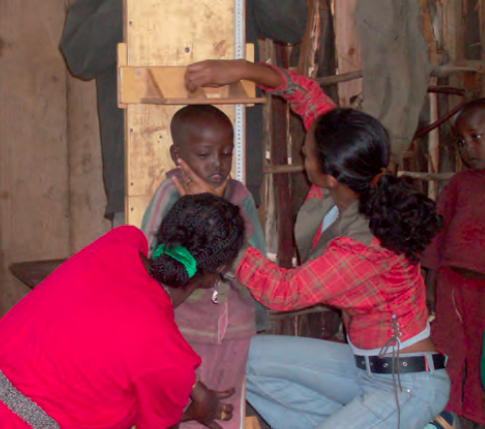Growth faltering and recovery in children aged 1– 8 years in four low- and middle-income countries: Young Lives
Summary of paper: Lundeed, E.A. et al. Public Health Nutrition: 2014 Sep;17(9):2131-7
 The objective of this study was to characterize post-infancy child growth patterns and determine the incidence of becoming stunted and of recovery from stunting. Data came from ‘Young Lives’, a longitudinal study of childhood poverty in four low- and middle-income countries: Ethiopia, India, Peru and Vietnam. Length/height measurements of children from each of these countries (n=7171) were analysed at ages 1, 5 and 8 years.
The objective of this study was to characterize post-infancy child growth patterns and determine the incidence of becoming stunted and of recovery from stunting. Data came from ‘Young Lives’, a longitudinal study of childhood poverty in four low- and middle-income countries: Ethiopia, India, Peru and Vietnam. Length/height measurements of children from each of these countries (n=7171) were analysed at ages 1, 5 and 8 years.
Results showed that the prevalence of stunting, i.e. the proportion of this population found to be stunted (as defined by Height-for-Age Z score <-2.0) at 1 year of age ranged from 21% (Vietnam) to 46% (Ethiopia). From age 1 to 5 years, the prevalence of stunting decreased by 15.1 percentage points in Ethiopia and increased in the other cohorts. From 5 to 8 years, stunting prevalence decreased in all cohorts.
The incidence of becoming stunted, i.e. new cases arising in this population between ages 1 to 5 years, ranged from 11 % (Vietnam) to 22 % (India); between ages 5 to 8 years, it ranged from 3 % (Peru) to 6 % (India and Ethiopia). The incidence of recovery from stunting between ages 1 and 5 years ranged from 27 % (Vietnam) to 53 % (Ethiopia); and between ages 5 and 8 years, it ranged from 30 % (India) to 47 % (Ethiopia).
In conclusion, the study found substantial recovery from early stunting among children in four low- and middle-income countries. Results suggests that, while prevention of early-life stunting must continue to be a top priority, programme planners and implementers should also consider identifying and targeting children who become stunted, or who are at risk of stunting, during infancy and beyond.

